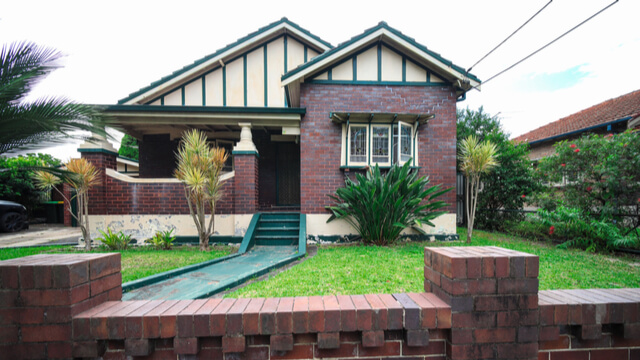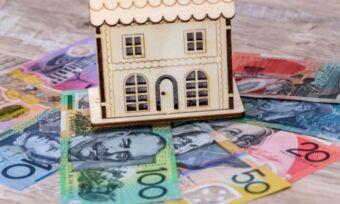What is negative gearing and how does it work?
Negative gearing can potentially allow eligible investment property owners in Australia to save money on their tax. Let’s take a look at what negative gearing is and how it works, as well as some of its potential pros and cons, and a few questions to consider when assessing this option.

Negative gearing can potentially allow eligible investment property owners in Australia to save money on their tax. Let’s take a look at what negative gearing is and how it works, as well as some of its potential pros and cons, and a few questions to consider when assessing this option.
Key points:
- An investment property can either be negatively or positively geared, depending on the rental income and expenses.
- If the income you receive from an investment property is less than the costs associated, then it is said to be negatively geared.
- When a property you own is negatively geared, you may be eligible for some tax concessions.
What is negative gearing?
The term ‘gearing’ refers to borrowing money to buy an asset. In the property context, it means taking out a home loan to buy real estate. There can be positive gearing, in which the rental income an owner gets from their investment property exceeds the interest repayments, property maintenance costs and other expenses they pay on it. Negative gearing is the opposite, where the investor’s rental income from a property is less than the costs of the mortgage, property maintenance and other expenses. In short, positive gearing refers to making a profit out of your investment property, whereas negative gearing means you’re making a loss and may be eligible for some tax concessions. Positive gearing isn’t always possible right away, which is one reason why some investors turn to negative gearing.
How does negative gearing work?
When it comes to property investment in Australia, the term ‘negative gearing’ refers to a situation where the rent and other income an owner receives from an investment property in a financial year is less than what they spend on expenses such as home loan interest, fees and other costs like renovations and repairs. As the Australian Taxation Office (ATO) explains, negative gearing is the opposite of positive gearing, where the investor makes a profit on their property.
More specifically, according to the ATO, your rental property is said to be ‘negatively geared’ if your tax-deductible expenses on it over the course of a financial year add up to more than the income you earn off it. If a property is negatively geared, the ATO advises that you may be able to deduct your expenses from your overall taxable income for the year, including any income you make from other sources, such as a salary or wages. This could result in you paying less tax than you otherwise would.
What is the difference between negative and positive gearing?
The difference between a negatively geared property and a positively geared one ultimately comes down to whether or not you make a profit from it. According to the ATO, a rental property you own is said to be ‘positively geared’ if your deductible expenses are less than the income you earn from the property – meaning, you make a profit from renting it out. If, however, your deductible expenses are greater than the income you earn, then your property is said to be negatively geared.
What investment property expenses can be claimed as tax deductions?
Negative gearing occurs when a property owner’s tax-deductible expenses on a property are higher than their rental income from it. Depending on your circumstances, the ATO says some of your tax-deductible expenses could include:
- advertising for tenants
- body corporate fees
- insurance costs for the property
- real estate agent fees and commissions
- home loan interest expenses
- repairs and maintenance costs
The ATO’s website provides a full list of which rental property expenses may and may not be considered ‘tax-deductible’. On the other hand, the ATO advises that investors can’t claim other costs that they don’t actually incur, such as utility bills paid by their tenants.
To successfully make tax deductions for negative gearing, the ATO says you may need to keep official documentation of the expenses you’ve incurred on your investment property, including bank statements and receipts.
Pros and cons of negative gearing
As with any tax or investment strategy, there are some potential drawbacks, as well as potential benefits, to negative gearing.
Pros
1. Potential tax savings
Property investors may be able to use negative gearing to try and turn their investment losses into a positive, by offsetting them against their taxable income over a financial year, meaning they pay less in tax for that year. If you’re disciplined with your investments, then negative gearing could be one way to help you minimise the impact of any investment losses over the short-term. In addition, the ATO says if your losses on your negatively geared property exceed the rest of your income for a financial year, you may be able ‘carry forward’ your loss, which could reduce your taxable income for the next financial year as well.
2. Capital growth
Besides tax savings, arguably the biggest benefit of negative gearing is that it can help an investor afford to own a property with the potential for high growth in value over time, even if that property can’t attract as much rental income as you might like in the short term.
Properties that have positive cash flow immediately can be costly and hard to find in many cases, but even if there’s no immediate return, negative gearing could entice an investor to purchase a more affordable property that they think may increase in value in the future.
3. More property options to choose from
Negative gearing can potentially open up the range of investment properties someone can choose to buy. This may allow an investor to buy in a capital city or other popular area that is more likely to attract tenants than somewhere more remote. Investing only in properties with positive cash flow restricts investors to areas where the rental income exceeds expenses, which may not necessarily suit every investor due to the higher property prices often associated with these properties.
Compare Property Investment Home Loans
Cons
1. Cash flow risks
If you’re negatively gearing, you typically need to regularly pay more money out of your own pocket than you get back from your tenants in rent. As a result, negatively geared properties can eat into your cash flow over time, even if you mitigate this by using negative gearing to pay less tax. This situation can be exacerbated if your tenants move out and you find it hard to attract new ones. Interest rate increases on your home loan could also affect your cash flow.
It could also be worth keeping in mind MoneySmart’s advice that if you’re making a regular loss on your investment property, it’s costing you money and you will need a separate job or other source of income apart from the rent your tenants are paying.
2. Capital growth risks
It may take many years before the value of your investment property grows, if it grows at all. During this time, you will be subject to house price fluctuations. The risk of having a property that costs more than the income it generates means you could find yourself in a situation where you can no longer afford to keep it and have to sell before it experiences any capital growth. A worst-case scenario is that you have to sell the property for less than what you originally bought it for.

3. Can affect your borrowing power
Negative gearing can limit how many investment properties you can buy at a time. In the eyes of most lenders, a negatively geared property or properties can adversely impact your investment property borrowing power, because if your income is already affected by those investments you may be seen as more likely to struggle with an extra home loan added into the mix.
Should I use negative gearing?
Here are some questions that could be worth considering before deciding on whether negative gearing is a suitable property investment strategy for you:
- How attractive is the property to potential renters? Is it in a good area? And will people want to live there?
- What will I do if I can’t find a tenant?
- Do I have the financial means to manage my property and the tenants that live in it, while losing money on it in the short term?
- What is the capital growth potential of the property? Or in other words, how much do I think it can grow in value before I sell it?
- Would I still be able to afford the home loan repayments if interest rates were to rise?
- How long will it take before the investment is positively geared?
- Could I still afford to live comfortably on the money I earn, knowing that I would be losing money on this investment?
- Will I be able to recover from a cash flow shortage?
- Does the potential tax benefit I might make from negative gearing (combined with the profit I could make when I sell the property), outweigh the cost of losing money on this investment?
- Might other investment options be better for my situation? (e.g. investing in other assets such as managed funds or superannuation, or paying the money into the mortgage on your own home)
- You may find it beneficial to consult a financial adviser before committing to what is a significant investment decision.
The comparison rate for all home loans and loans secured against real property are based on secured credit of $150,000 and a term of 25 years.
^WARNING: This comparison rate is true only for the examples given and may not include all fees and charges. Different terms, fees or other loan amounts might result in a different comparison rate.

Up to $4,000 when you take out a IMB home loan. Minimum loan amounts and LVR restrictions apply. Offer available until further notice. See provider website for full details. Exclusions, terms and conditions apply.
 Owner occupied
Owner occupied
 20% min deposit
20% min deposit
 Redraw facility
Redraw facility
 Owner occupied
Owner occupied
 10% min deposit
10% min deposit
 Redraw facility
Redraw facility
 Owner occupied
Owner occupied
 20% min deposit
20% min deposit
 Redraw facility
Redraw facility
 Owner occupied
Owner occupied
 20% min deposit
20% min deposit
 Redraw facility
Redraw facility
 Owner occupied
Owner occupied
 40% min deposit
40% min deposit
 Redraw facility
Redraw facility
 Owner occupied
Owner occupied
 40% min deposit
40% min deposit
 Redraw facility
Redraw facility
Canstar may earn a fee for referrals from its website tables, and from Sponsorship or Promotion of certain products. Fees payable by product providers for referrals and Sponsorship or Promotion may vary between providers, website position, and revenue model. Sponsorship or Promotion fees may be higher than referral fees. Sponsored or Promoted products are clearly disclosed as such on website pages. They may appear in a number of areas of the website such as in comparison tables, on hub pages and in articles. Sponsored or Promoted products may be displayed in a fixed position in a table, regardless of the product’s rating, price or other attributes. The table position of a Sponsored or Promoted product does not indicate any ranking or rating by Canstar. For more information please see How We Get Paid.
Cover image source: Moon Safari/Shutterstock.com
This article was originally written by Tom Letts and has been updated.
This article was reviewed by our Editor-in-Chief Nina Rinella before it was updated, as part of our fact-checking process.

Alasdair Duncan is Canstar's Content Editor, specialising in home loans, property and lifestyle topics. He has written more than 500 articles for Canstar and his work is widely referenced by other publishers and media outlets, including Yahoo Finance, The New Daily, The Motley Fool and Sky News. He has featured as a guest author for property website homely.com.au.
In his more than 15 years working in the media, Alasdair has written for a broad range of publications. Before joining Canstar, he was a News Editor at Pedestrian.TV, part of Australia’s leading youth media group. His work has also appeared on ABC News, Junkee, Rolling Stone, Kotaku, the Sydney Star Observer and The Brag. He has a Bachelor of Laws (Honours) and a Bachelor of Arts with a major in Journalism from the University of Queensland.
When he is not writing about finance for Canstar, Alasdair can probably be found at the beach with his two dogs or listening to podcasts about pop music. You can follow Alasdair on LinkedIn.
The comparison rate for all home loans and loans secured against real property are based on secured credit of $150,000 and a term of 25 years.
^WARNING: This comparison rate is true only for the examples given and may not include all fees and charges. Different terms, fees or other loan amounts might result in a different comparison rate.
 Owner occupied
Owner occupied
 20% min deposit
20% min deposit
 Redraw facility
Redraw facility
Try our Home Loans comparison tool to instantly compare Canstar expert rated options.
The comparison rate for all home loans and loans secured against real property are based on secured credit of $150,000 and a term of 25 years.
^WARNING: This comparison rate is true only for the examples given and may not include all fees and charges. Different terms, fees or other loan amounts might result in a different comparison rate.






